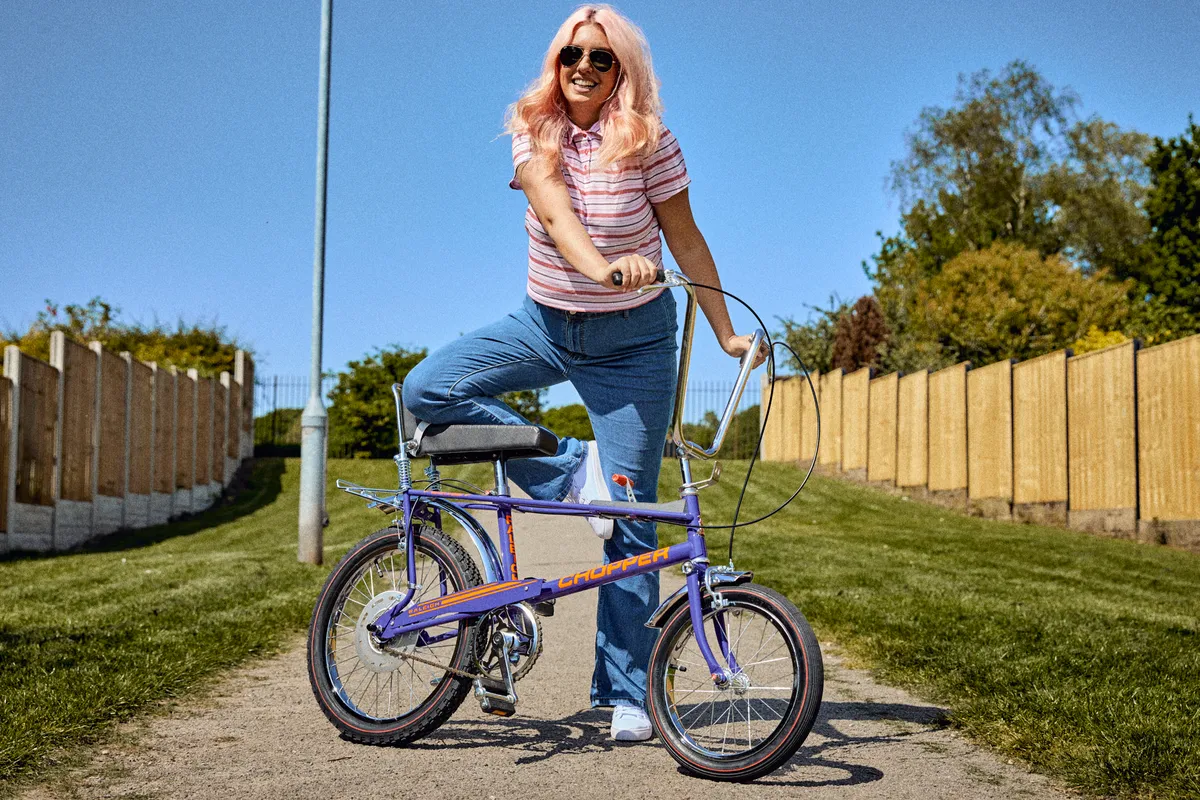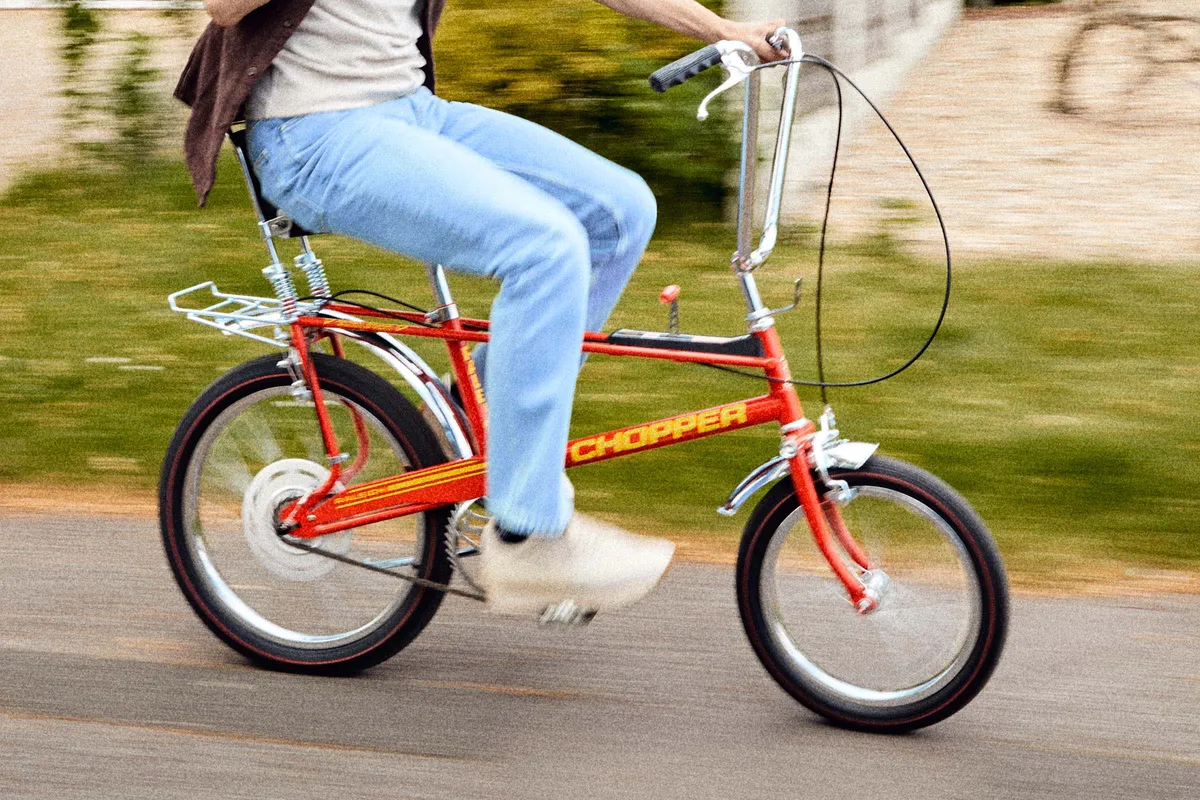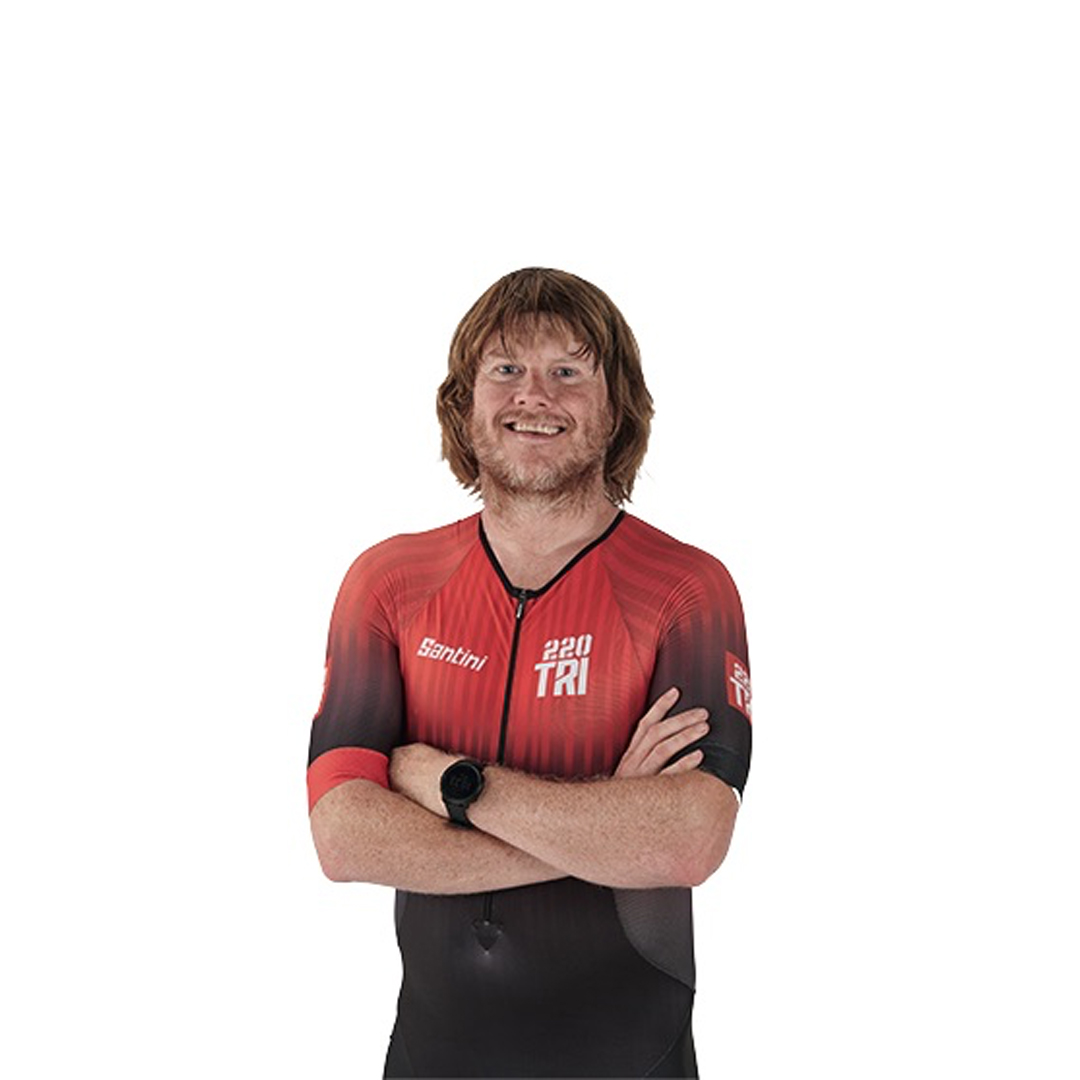Ask any child of the 70s or 80s which bike they’d like to ride dressed in their flares, a tank top and oversized-collared shirt and the reply would be unanimous: the Raleigh Chopper.
Its unique design was dripping with Californian cool and saw more than 1.5 million Choppers manufactured.
And then… nothing. Sales dwindled, production stopped and thousands of devotees mourned.
Well, the black armbands can now be removed because the Raleigh Chopper is back, announced last month to widespread media coverage here in the UK, and going on sale today. Here, we look back at its rich and varied past, and reveal what features are seen in the present…
Mysterious beginnings
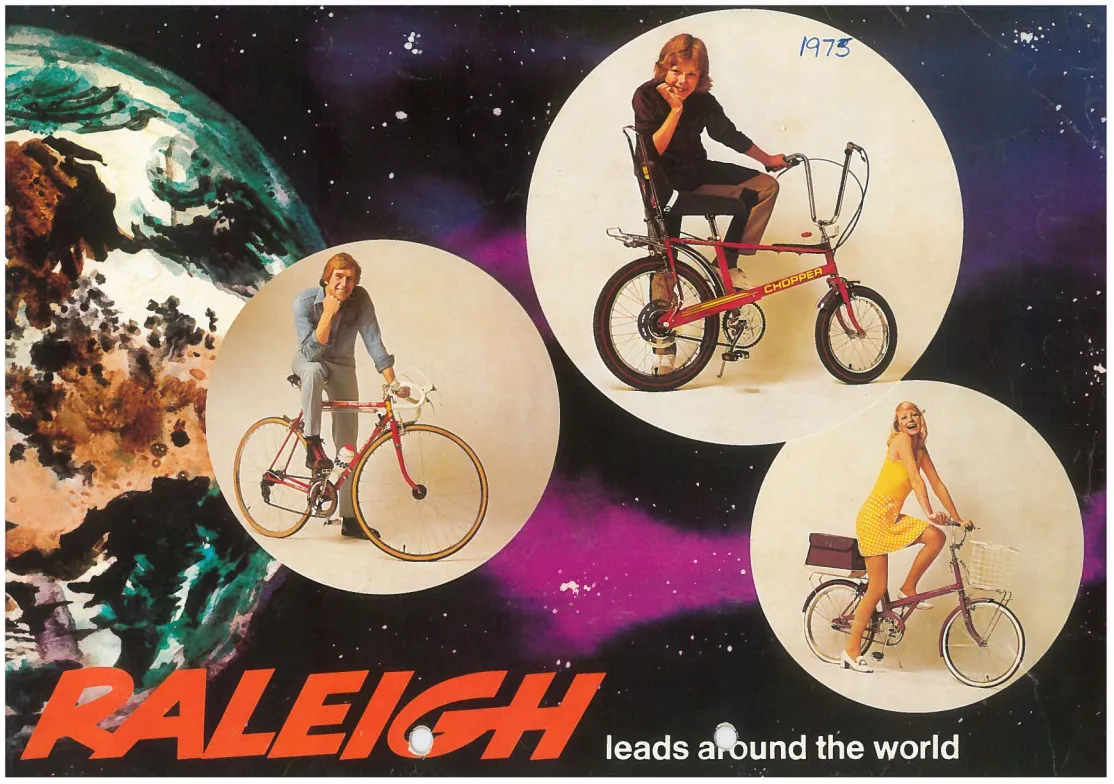
“The Chopper has an interesting early history,” says Raleigh’s managing director, Lee Kidger. “It was two years in development with the patent registered in the US in 1967, eventually launching in the US market in 1969.
“The bike was originally produced to go up against the beach cruisers and dragster-style bikes such as the Schwinn Stingray, which were very popular at the time. The Chopper launched in the UK six months later after a disappointing start to sales in the US. By contrast, it took off in the UK.”
This was the MKI and was designed by… well, good question. “We don’t really say because there’s a hell of a conflict around that answer, with six or seven people laying claim,” says Kidger.
Many Raleigh employees or consultants worked directly on the Chopper so, says Kidger, it’s hard to unpick.
One version of events is that the late Alan Oakley of Raleigh came up with the design after watching Easy Rider while in America. The film stars Jack Nicholson, Peter Fonda and Dennis Hopper and is famous for its Harley-Davidsons.
The apocryphal, or not, story says that Oakley sketched out his idea on the plane back home to the UK, drawing what would become the MKI on the back of an airmail envelope.
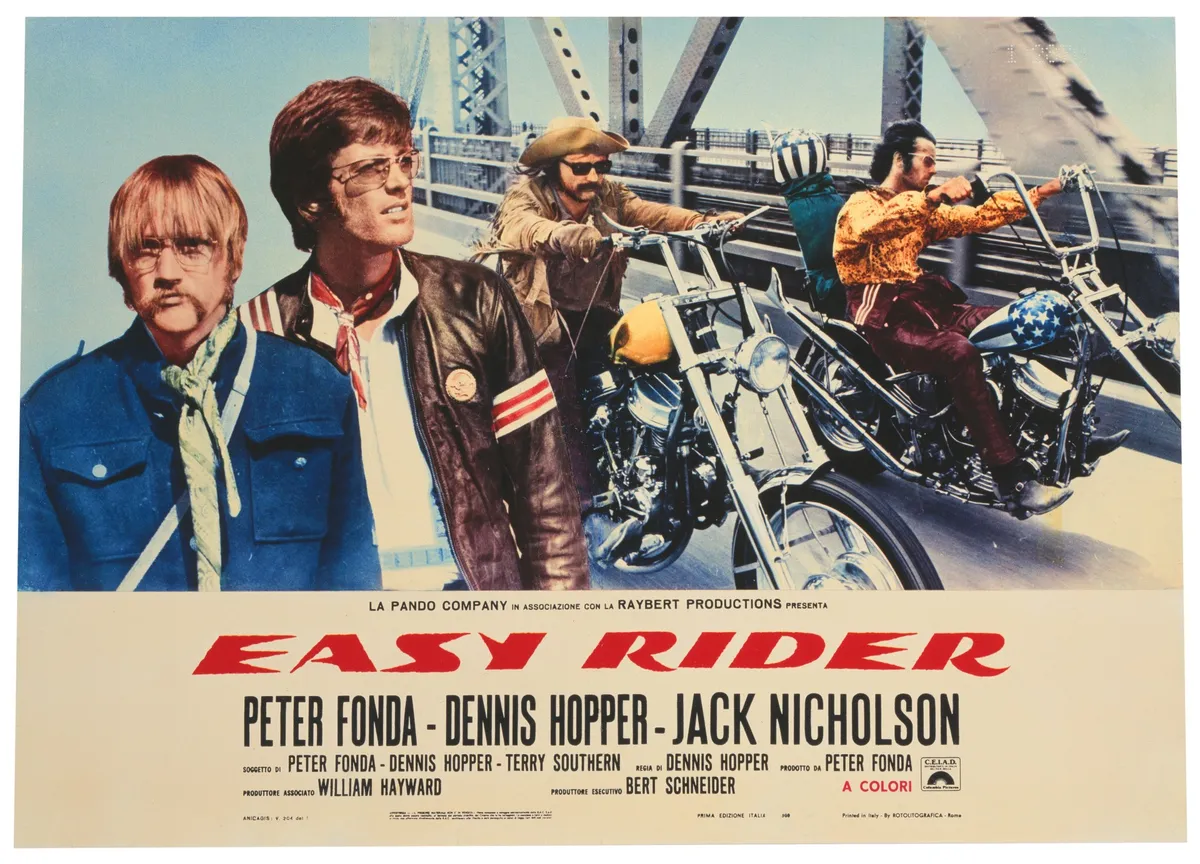
John Lees, author of Raleigh Chopper MKI and MKII: A Guide to Restoration was convinced, referencing Oakley as the man who introduced the Chopper to the world in the foreword.
Still, Kidger plays a straight bat and you can’t argue that this creator anonymity adds an air of intriguing mystery to the story. What we know for certain is that John Gordon, Harry Letherland and Tom Karen are listed on the original US patent.
We’re also clear that its name catalysed a series of design nuances specific to the Chopper. “The name came from chopper or ‘chopped’ motorcycles that were very popular in the US at the time,” Kidger explains.
“The long saddle and back bar, or ‘sissy bar’ as it is more commonly known, were designs that took inspiration from drag cars and the roll bar that sits behind the driver.
"This also accounts for the large rear wheel and small front wheel. The arrow frame design, high handlebars and long saddle were typical of cruiser bikes that were popular in the US during the 70s.”
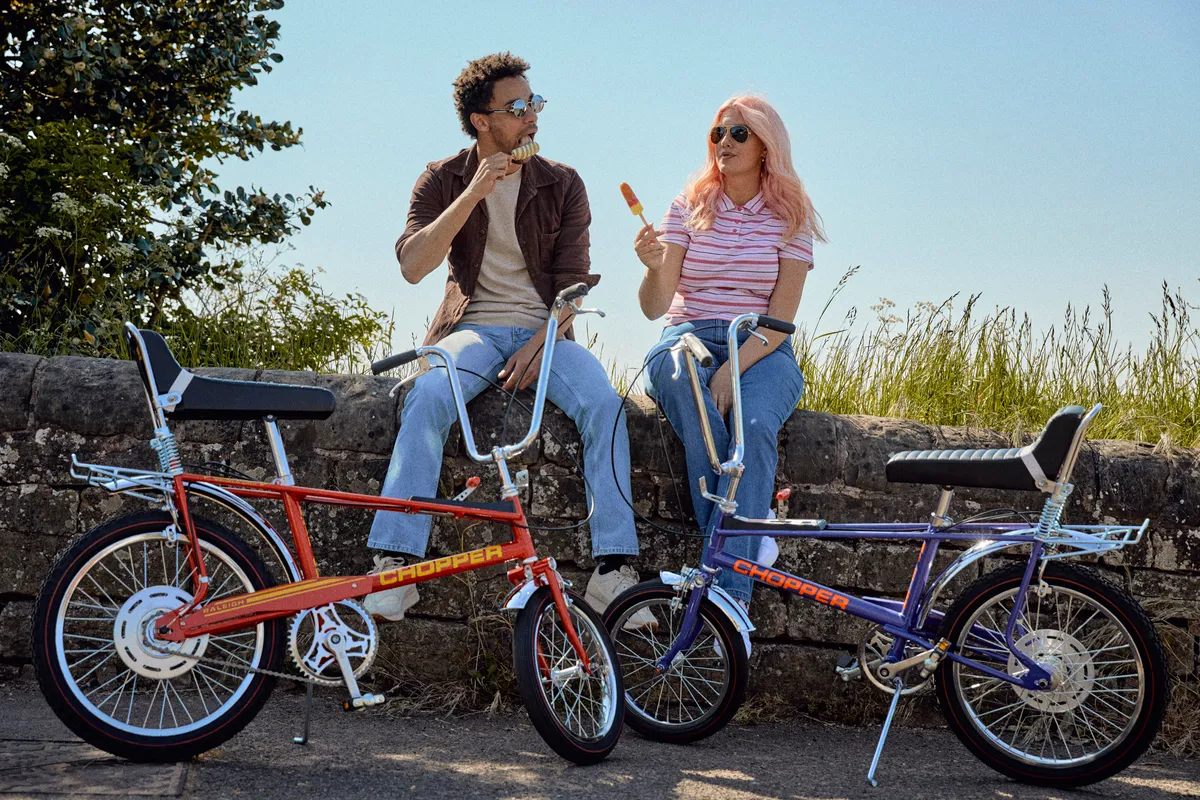
Safety evolution
The MKI proved popular but, as would become a theme for the Chopper, it demanded a MKII to overcome safety issues.
The original seatstay design rose 90 degrees to the saddle and was entirely straight, resulting in a rather unstable ride.
A slight seatstay kink in the MKII improved the situation. The designers also shortened the saddle slightly in an effort to deter youths doubling up on the Chopper, which had made it even more unstable and dangerous.
Raleigh also narrowed the handlebars slightly, again for safety reasons. The iconic gear shifter became a little less bulbous to limit the chances of teenage boys never having children if they fell off. It was released in 1972.
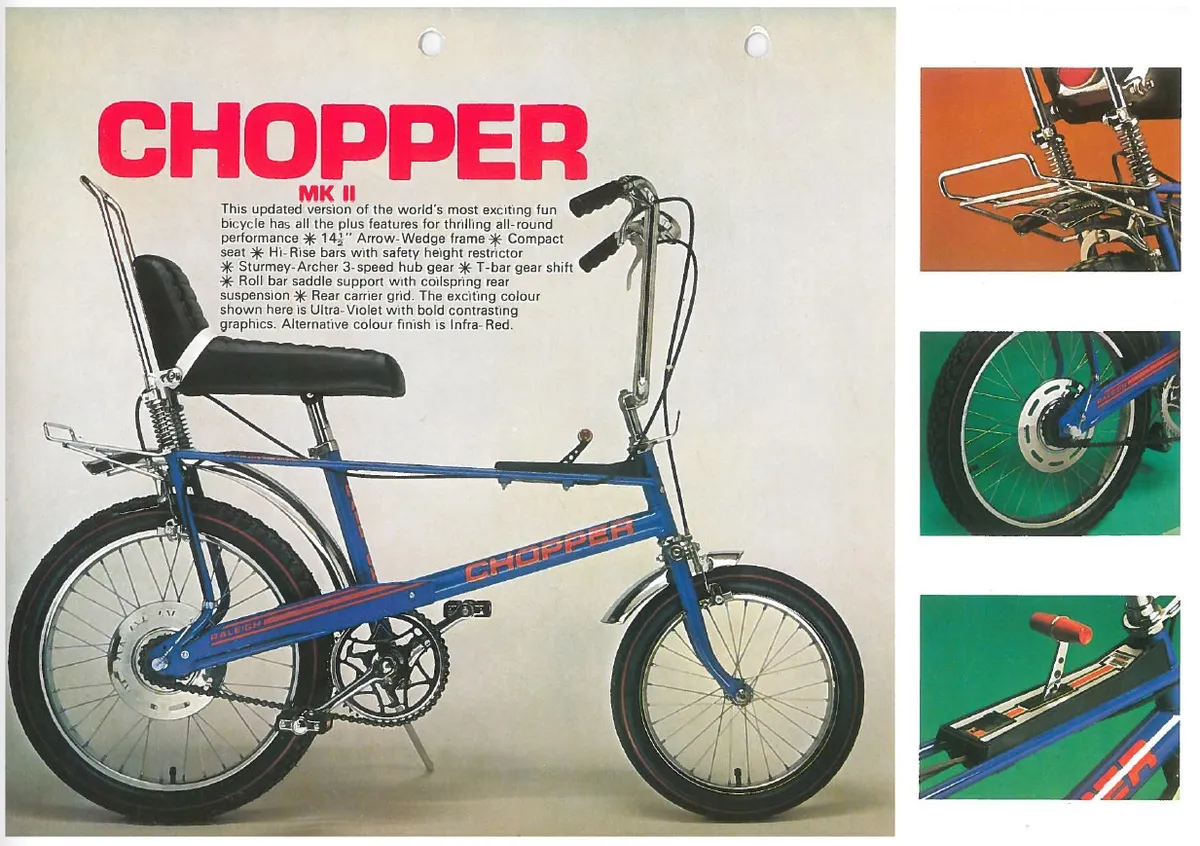
All of these alterations paid off and brought Raleigh an even more fanatical and significant fanbase, the Chopper’s culturally relevant status heightened by appearances in 80s movie classics such as The Goonies and Back to the Future.
Britpop band Supergrass rode Choppers in their UK chart No.2 single Alright and Lily Allen rode a Chopper in her biggest hit LDN.
It seemed the Chopper was here to stay… and then came the MKIII. YouTube channel Iconic Brands called it “a horror of health and safety gone mad… They split the saddle and added protection to the back to break a fall. They also used aluminium so it was lighter and replaced the gear stick”.
Arguably, it was this last design tweak that proved the most heretical as Raleigh employed a throttle shifter instead. “Many thought the gear shifter was replaced because of safety standards,” Kidger clarifies. “That wasn’t the case. That was just the decision made in 2004.”
A bad one. The MKIII ceased production. But now the Chopper is back with what we would presume is the MKIV, but Raleigh terms the ‘New Chopper’.
Whatever its moniker, the new bike is based on what many feel is the engineering and aesthetic masterpiece that is the MKII.
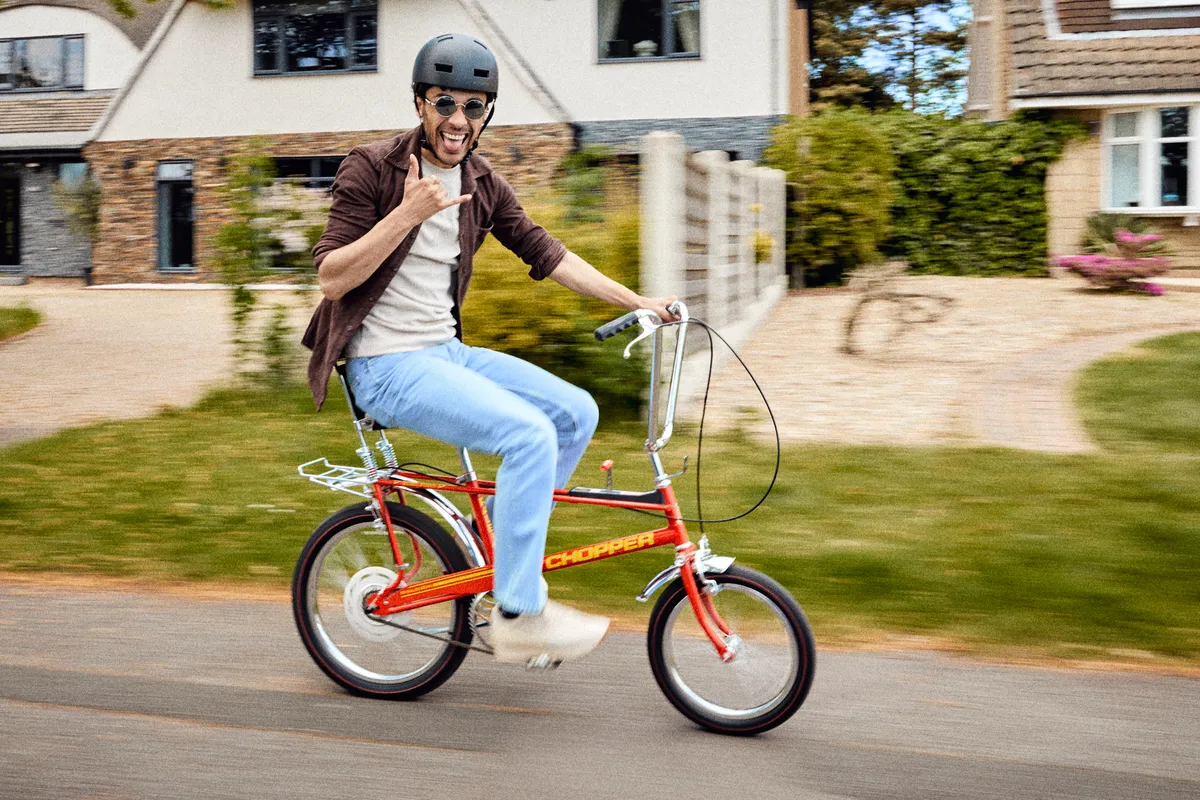
“At first glance, it looks like an original MKII,” says Kidger. “In fact, many thought the first picture we put up was of a restored MKII, not the new Chopper.”
“It’s an iconic product, so we wanted to keep changes minimal,” he continues. “We’ve used aluminium in some parts rather than steel just because of modern manufacturing standards. We’ve also had to use a slightly shorter and lower saddle because of safety standards.
“But that’s pretty much it; that said, it’s taken nearly five years of development. Covid held things up slightly, but there’s a lot of engineering and craftmanship involved, including forging new moulds. It’s designed in the UK and mostly manufactured outside the UK, albeit two or three parts were made here.”
Satisfying the fanbase
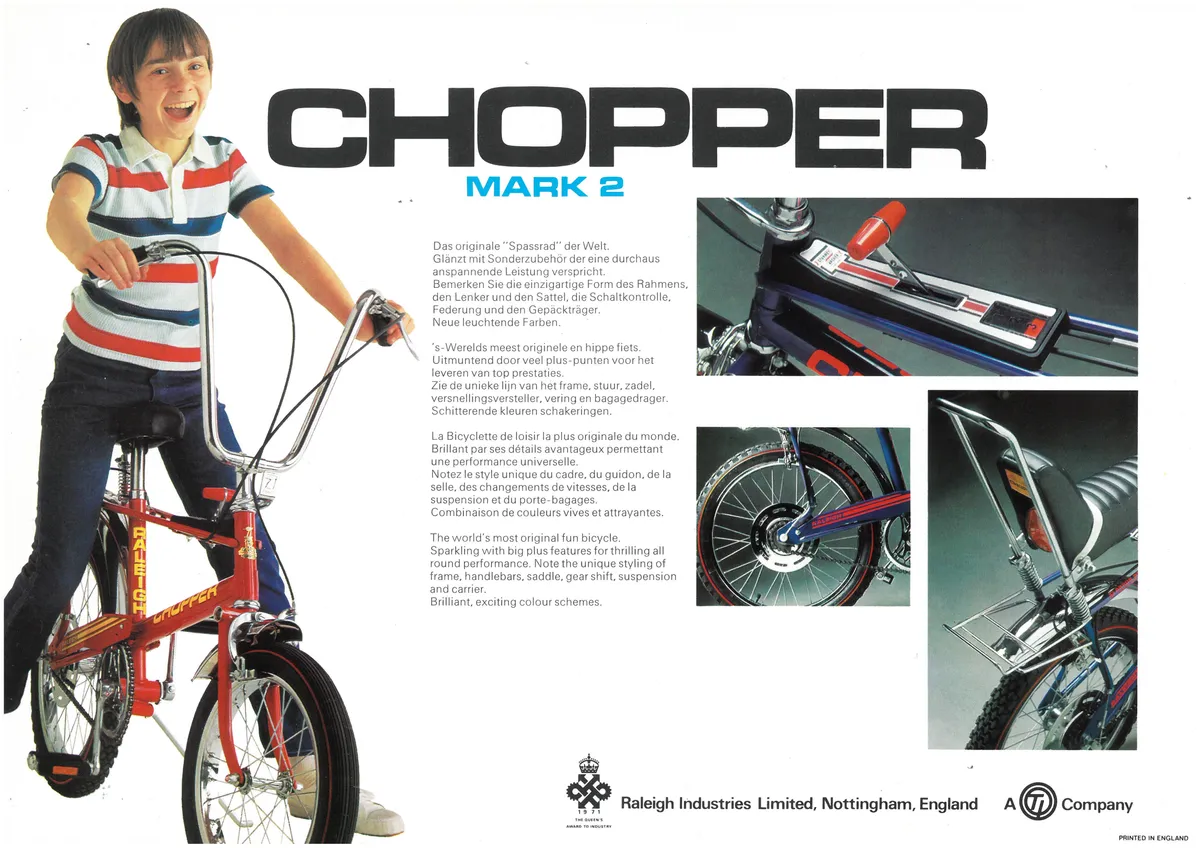
Raleigh knows the new Chopper will undergo a scrutiny reserved for the most iconic of bikes, especially because the fanbase is so significant and so loyal.
“We’ve got a lot of brand fans who love our bikes,” says Kidger. “The success of the rebirth of the Burner [relaunched in 2022 to celebrate 40 years since its creation] showed us that we can continue to make bikes for our fans. Of course, we’re looking for new markets, too, but we know we have passionate followers.”
One of whom is Colin Hewitt of Worle in North Somerset. “I have three-and-a-half Choppers,” he says. “I have three complete bikes and a frame that I’ve stripped and hung on the wall.”
Hewitt, like many a Chopper enthusiast, will seek out rusty bargains online and restore them back home. “I’ll clean up the chrome, though I’ll create a patina effect where it actually looks old.”
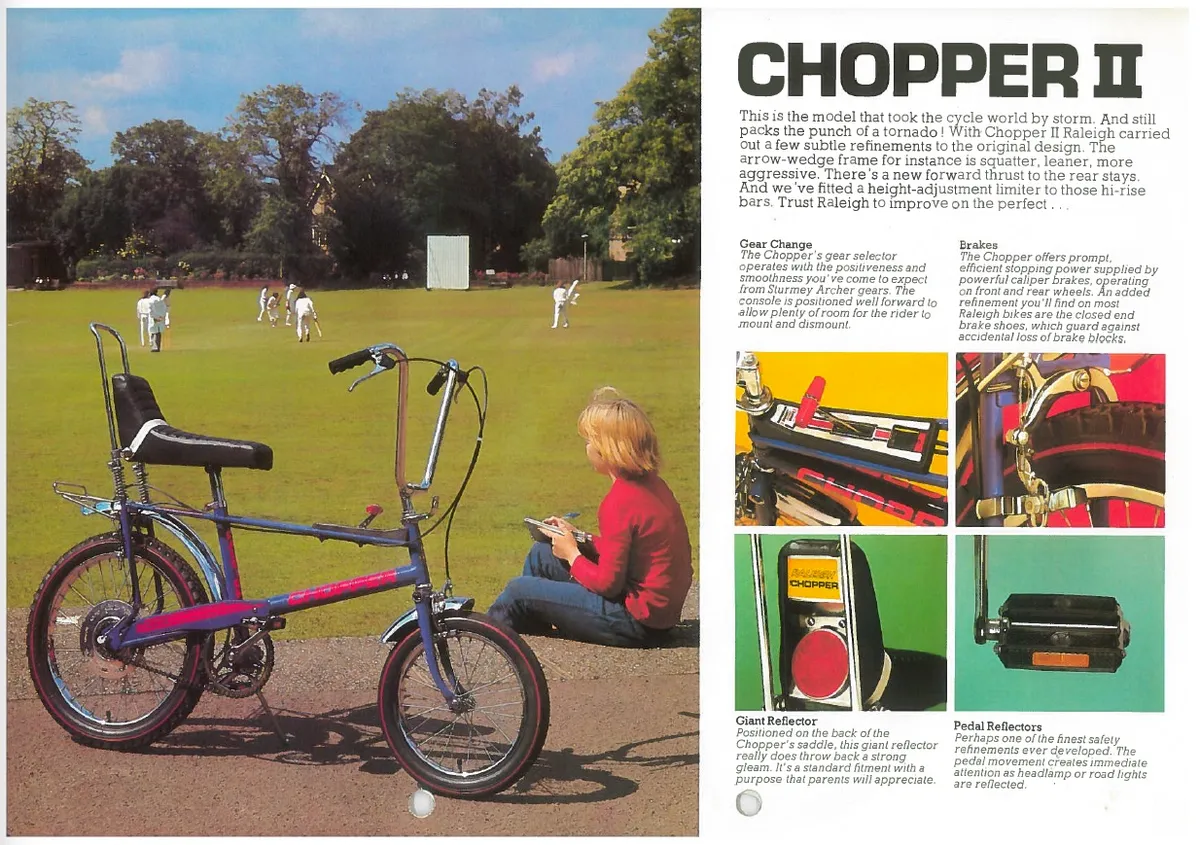
He’s renovated and sold Choppers in the past, but is happy to hold onto his current models, and not just for ornamental interest.
“My partner and I often head to the nearby Weston-super-Mare seafront, where people will shout out, ‘There’s a Raleigh Chopper. I had one of those when I was a kid’. They’ll take photographs and seem to enjoy the sentimentality of them.”
Hewitt’s a relatively newbie when it comes to Chopper collecting. He had one as a child, but it’s only in the last couple years that he’s rekindled his Chopper love.
He’s now a bonafide convert, recently attending the Raleigh Chopper Show in Emberton Park, Milton Keynes. There, Hewitt and several hundred enthusiasts talked, ogled and rode Choppers.
“There was also a competition for the best patina, best Chopper at the show, best MKIII… probably nine or 10 categories to enter,” he says. “It was great fun and I’ll be back, though I’ll still attend with far fewer Choppers than Harry Potter.”
The Chopper’s number-one fan
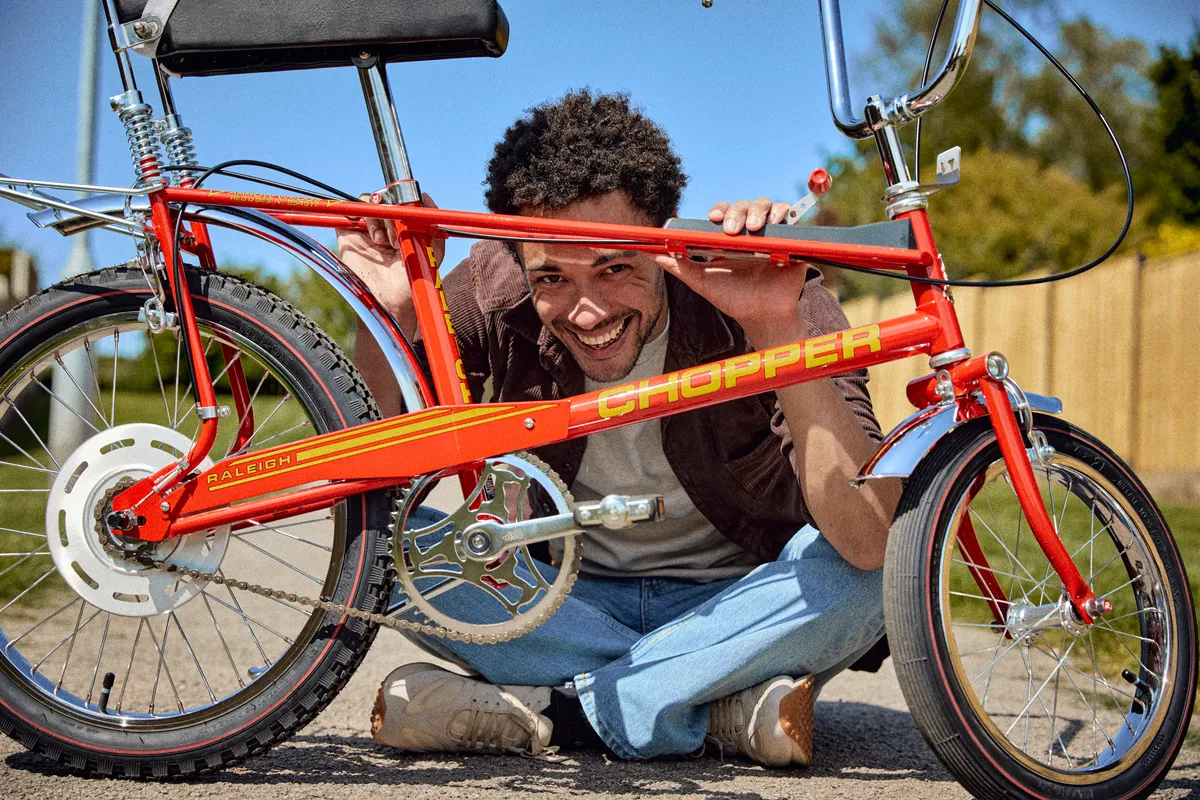
Harry Potter – yes, that is his real name – runs a Raleigh Chopper owners’ group, whose membership numbers over 4,000 and stretches as far afield as China and Costa Rica.
Potter also works in his family’s lifestyle and surf shop in Barmouth, North Wales, called First Impressions – employment that’s needed to fuel Potter’s Chopper love-in.
“I have around 60 or 70 Raleigh Choppers at my place and at my parents’,” he tells us in-between serving customers. “I tell people that they’ve cost me 50 grand, so I’ll stick with that…”
Whatever 27-year-old Potter’s outlay, he could recoup that many times over if he’d ever sell – which he never would. “I’ve been collecting them for around 13 years,” he says. “My parents bought me one for Christmas and I really enjoyed riding it and messing around with it.
“I then wanted a project, so bought two more. From then on, my mum and dad drove me around the country seeking Choppers.
"I remember one purchase involved a seven-hour round trip to Lytham St Annes. It was an absolute rust bucket and I didn’t touch it for three years. It was an interesting talking point, though!”
“One day it’d be great to open a Chopper museum,” he adds. “Us collectors are very passionate about them and it’s why I’m very careful when people tap me up online seeking my advice. I don’t want to act as the middleman for people buying and selling them.”
Like choosing your favourite child, Potter’s reticent to pick a favourite but pitches for a rare 10-speed MKII, which were made in very small numbers for the American market.
Conversely, the MKIII nestles some way down his Chopper roll of honour. “From the way they talk about it, Raleigh are quite embarrassed about that model, too,” Potter says.
“It’s why they’ve gone to town with the new one – they know they can’t make the same mistakes again.”
Potter seemingly has a direct line to the upper echelons at Raleigh and has become a poster boy for the Chopper. Since news of its return hit the headlines, he’s been on BBC Wales and the BBC Breakfast Show, on numerous newspapers and the Jeremy Vine Show.
That media attention reveals the affection many hold for the Chopper, and it’s an affection that sees the growing Chopper club undertaking regular ride-outs around the county, with upcoming events in Warwick and Rhyl.
He's a Chopper aficionado and will be first in line at the Raleigh Exhibition Centre in Nottingham to collect his new Chopper at launch today.
“When this comes out, I don’t think Raleigh are prepared for it,” he says. “When I talk to them, they just think they’re bringing out a new Chopper and they hope people will like it. They don’t realise how big this is going to be. There are thousands of people interested and I think it’s a limited run of no more than 2,000.
"Yes, it’s £950 [the previous model would have been around £350 to £400 in today’s money], but bikes cost more these days. This will be huge.”
Raleigh certainly hopes so.
The limited-edition Chopper will be launched in the two original colours: infrared and ultraviolet. They’ll be available to buy from Tuesday 20 June at 12pm, online at raleigh.co.uk and at the Raleigh Bikes Nottingham store. The online sale will have a virtual queuing system in place and at Raleigh Bikes Nottingham there will be a queueing system outside the store. In both cases, Choppers will be sold on a first-come, first-served basis.
